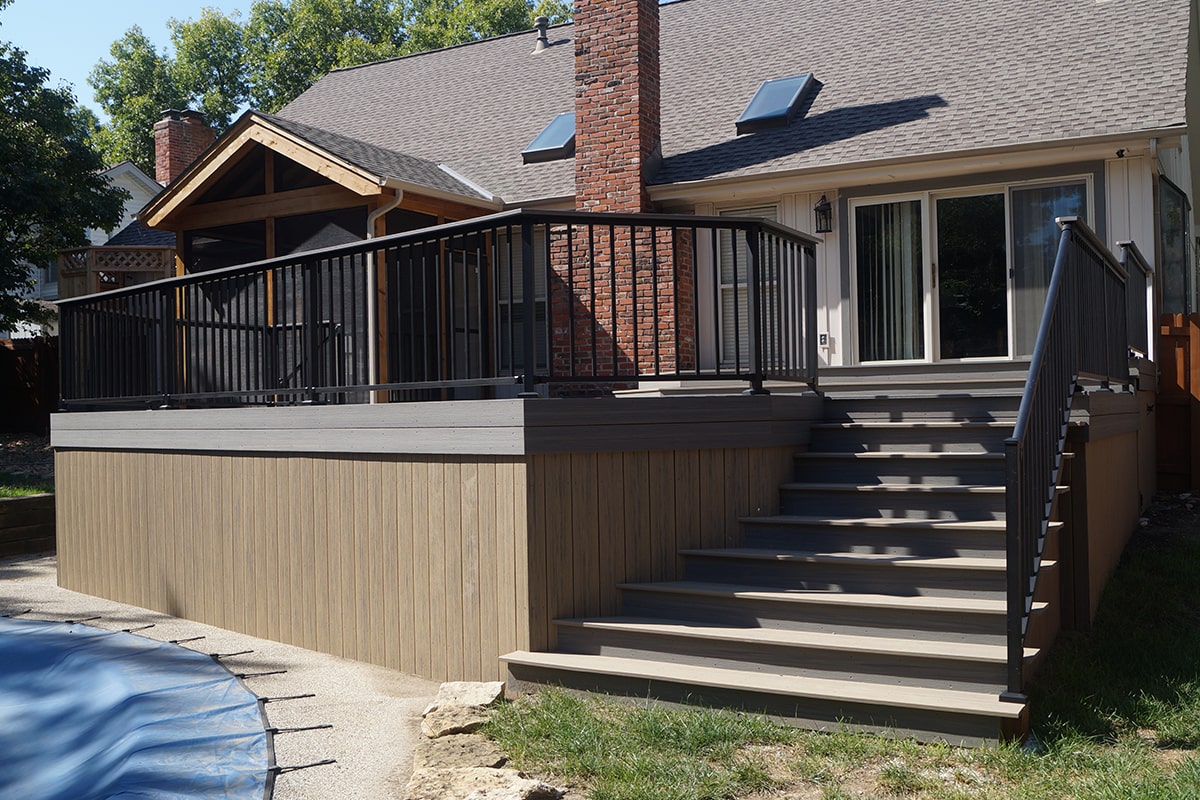Wood decking wears down over time. Boards can rot, split, or lose color, and that’s when many people look for something tougher. Replacing deck boards with composite gives the surface a fresh look and cuts routine maintenance.
You can do this on the frame you already have, but good results start with prep. We inspect the structure first. The look and life of the deck come down to three checks: joist spacing, how straight the joists run, and the condition of the frame.
Can You Replace Wood Decking with Composite?
Yes. You can pull the wood boards and install composite. It isn’t a simple, straight swap. Composite is rigid and will show any dips or twists in the frame. The frame underneath needs to be flat, level, and in good shape before any new boards go down.
Joist spacing matters when switching from wood to composite:
- In most builds, joists are set 16 inches on center.
- Composite can span that distance; we prefer 12 inches on center for stronger support.
- Tighter spacing adds strength and helps the surface stay even.
Pro tip: Check local building codes and the manufacturer’s installation guide. Composite spacing rules are often stricter than wood.
How to Check the Framing Before Installing Composite
When the old wooden boards come off, the frame can shift. Wood is stiff and often hides uneven joists, so problems show up after demo. You may see joists that crown up or sag down. Check for these issues now, before any new boards go on.
Pull a tight string line across the joists from end to end. The line makes high and low spots easy to see. Mark each spot and fix it; shave a high joist, add shims to a low one, or add a new joist beside it. If you skip this step, composite follows the shape of the frame, and you end up with waves, dips, or humps across the deck.
Key Takeaway: Composite will mirror the frame. If the frame is not level, your finished deck will not look level either.
Need expert help with replacing deck boards with composite? Contact DW Decks today for a free consultation.
The Real Cost of Re-Skinning a Deck
Replacing boards and railings on an old frame is called reskinning. Many homeowners ask for this option because it costs less than a full rebuild at first. But there are risks you should understand.
Replacing boards and railings on an old frame is called reskinning. It usually costs less than a full rebuild at first, but the condition of the frame matters most.
- About 85 to 90 percent of the cost is in the decking and railings.
- The frame is older wood with no warranty and no clear lifespan.
- If the frame fails, you must remove the new composite and rebuild everything.
That means you could spend most of your budget now, only to face the same project again later if the frame cannot hold up.
Risk vs Reward: Should You Re-Skin or Rebuild?
In our view, the risk of reskinning is often greater than the reward. Yes, you save money at first, but you are relying on an old frame that could fail at any time. If it does, you pay twice, once for the reskin and again for the full rebuild.
Still, some homeowners choose to replace only the boards and railings. If that is your choice, it can be done. Just make sure the joists are strong, spaced correctly, and checked with a string line for straightness before installing composite.
Conclusion: Work With Pros Who Know Decking
Replacing deck boards with composite can give your deck a fresh look and cut down on upkeep. But the success of the project depends on the frame below. If the frame is weak, warped, or too old, rebuilding may be the better choice.
At DW Decks, we help homeowners make the right call. Whether you want to reskin or build new, we make sure your deck is safe, strong, and built to last. Call us today for a free quote and let us bring new life to your outdoor space.







